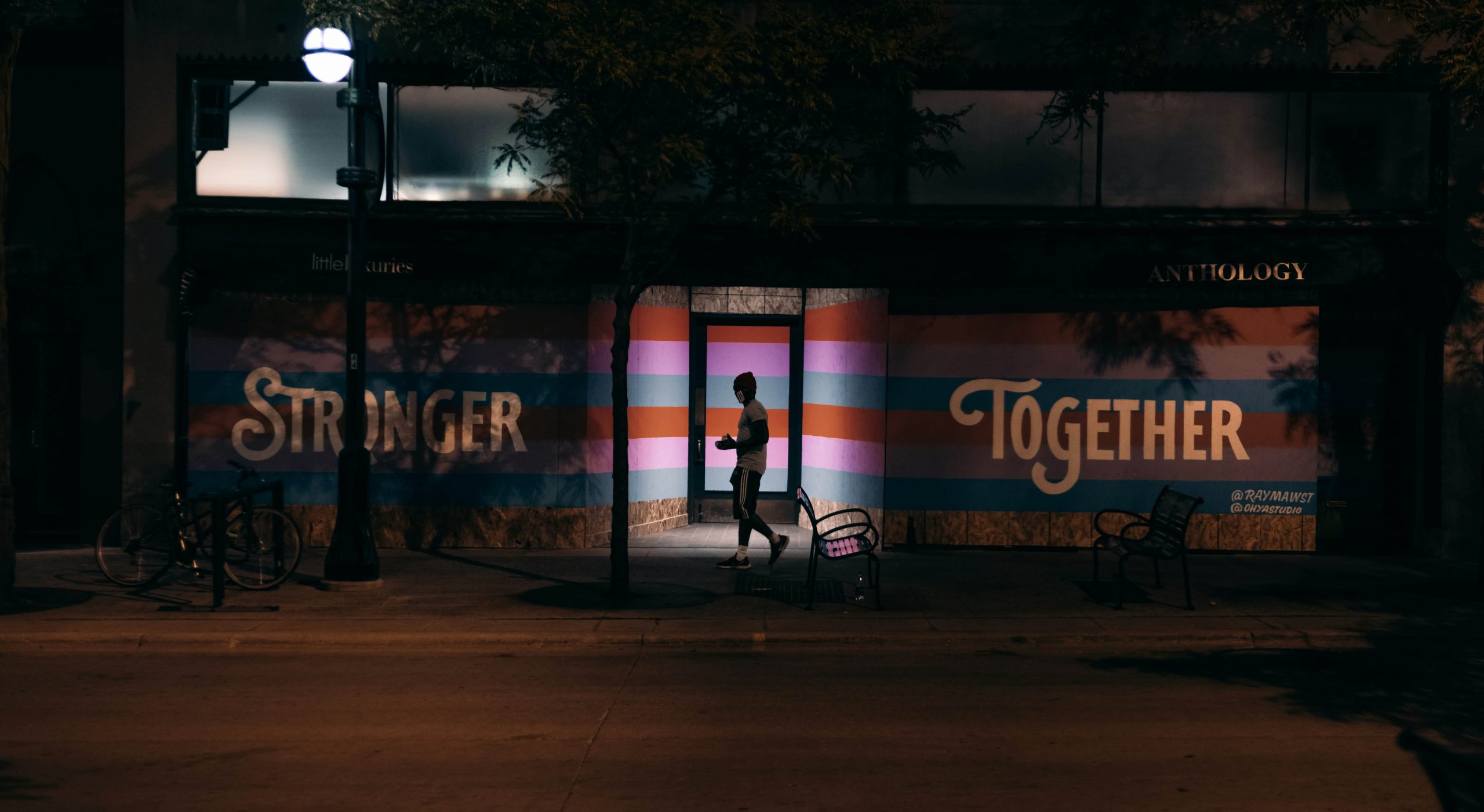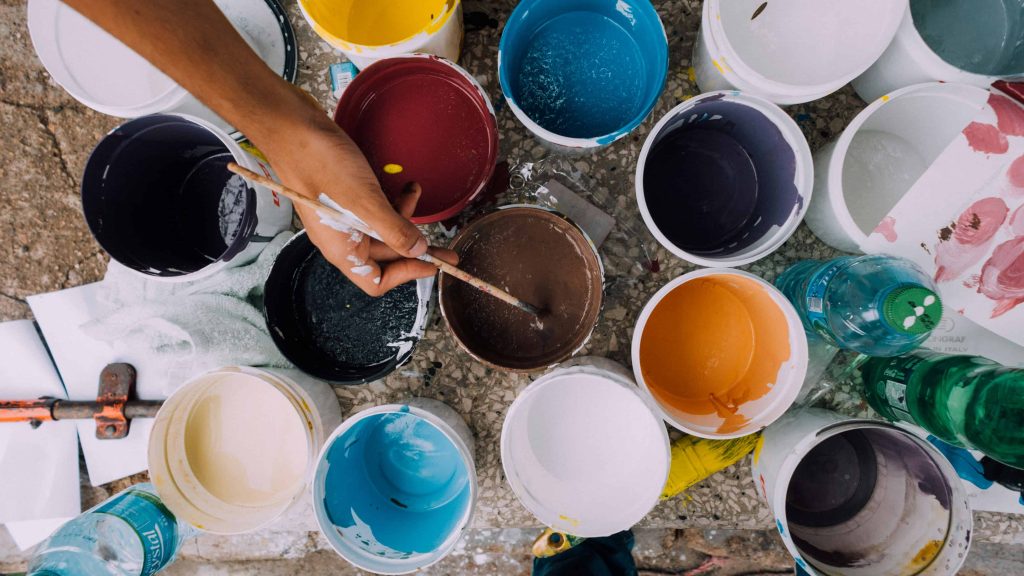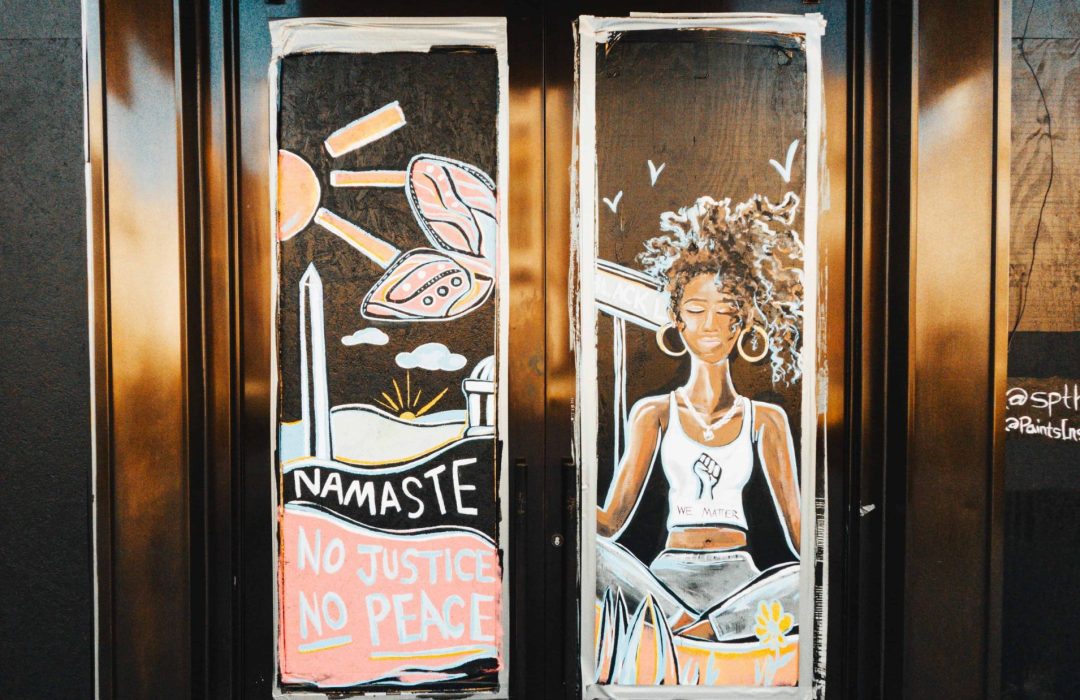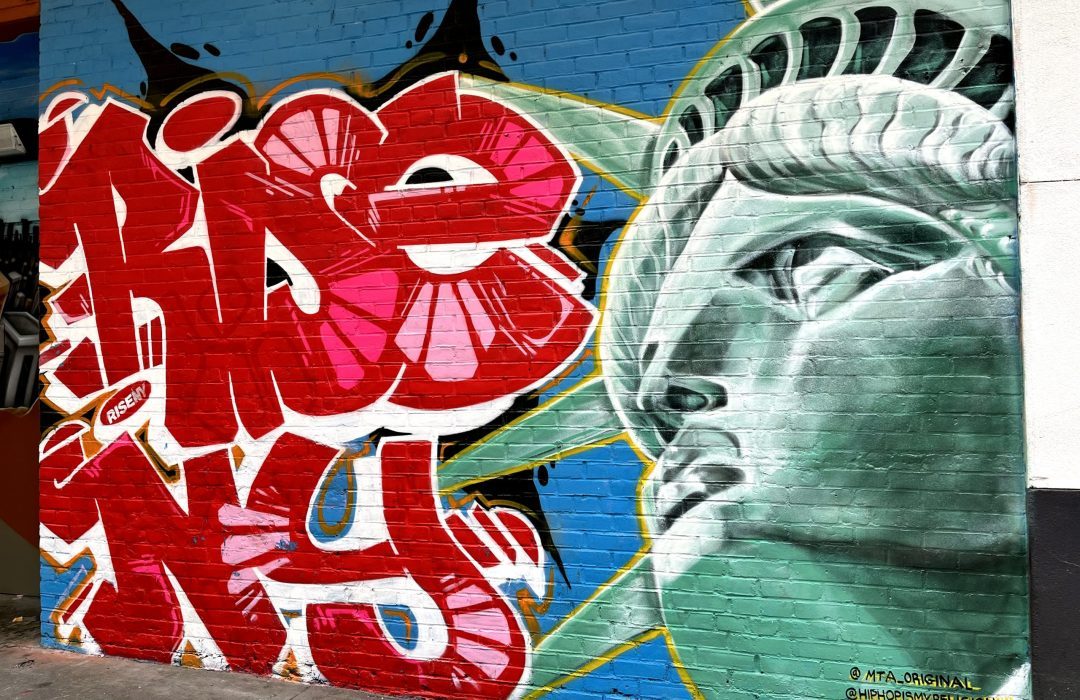
24 Mar The Intersection of Art and Politics
Art and politics have shared a dynamic relationship throughout history, intertwining to reflect, challenge, and shape societal values and power structures. Art, as a form of creative expression, and politics, as the pursuit and exercise of power, have long been intertwined. The relationship between the two is multifaceted, encompassing various forms of expression and ideological stances. At its core, art serves as a reflection of societal norms, values, and power dynamics, while politics provides the framework through which these dynamics are negotiated and contested.
Historical Art Narratives

Photo by russn_fckr
Ancient Era
Art in ancient civilizations served multifaceted purposes, prominently including the propagation of rulers’ images and ideologies to reinforce political authority. For instance, the grandeur of Egyptian pyramids not only symbolized power and divine connection but also legitimized the rule of pharaohs through monumental architecture. Similarly, the triumphal arches of Rome celebrated military victories and glorified the empire’s leadership, intertwining art with political messaging to bolster state authority and prestige.
Medieval Era
Throughout the medieval period, art assumed a central role in both religious and political spheres, often intertwining the two. Cathedrals, adorned with intricate sculptures and stained glass windows, served as physical manifestations of divine authority and religious dogma, while religious paintings conveyed narratives of salvation and moral instruction to the masses. However, the era was also marked by pervasive censorship and control of artistic expression by ecclesiastical and political authorities, aimed at suppressing dissent and maintaining societal order.
Renaissance
The Renaissance heralded a transformative period in art, characterized by the emergence of individual artists who wielded their creativity as a tool for political commentary and social critique. Visionaries like Leonardo da Vinci and Michelangelo challenged established power structures through their innovative works, pushing the boundaries of artistic expression under the patronage of influential rulers and elites. Their art not only celebrated humanism and the revival of classical ideals but also subtly questioned prevailing norms and ideologies, paving the way for intellectual and cultural revolutions.
Modern Era
In contemporary times, art has evolved into a potent instrument for social and political discourse, transcending traditional mediums to address pressing issues and advocate for change. From Picasso’s haunting masterpiece “Guernica,” which starkly depicted the horrors of war and fascism, to the activism embedded in music, literature, and film, artists continue to leverage their platforms to challenge injustices and amplify marginalized voices. In an era marked by globalization and technological advancement, art serves as a mirror reflecting society’s triumphs and tribulations, inspiring dialogue, empathy, and collective action toward a more just and equitable world.
Functions of Art in Politics

Photo by summertrain
Propaganda and persuasion
Art has long been recognized as a potent tool for promoting specific political agendas and influencing public opinion. Throughout history, rulers and governments have commissioned artworks to glorify their reigns, propagate their ideologies, and solidify their power. From monumental sculptures and grand architectural projects to intricate paintings and propaganda posters, art has been strategically employed to sway hearts and minds, often blurring the lines between artistic expression and political manipulation. Whether through idealized portraits of leaders or heroic depictions of military triumphs, art has played a pivotal role in shaping narratives and rallying support for various political movements and regimes.
Social critique and commentary
In addition to serving as a vehicle for propaganda, artists frequently utilize their creative talents to critique societal norms and challenge the status quo. Through paintings, sculptures, literature, music, and performance art, they provoke thought, raise awareness of social injustices, and stimulate conversations about pressing issues such as inequality, discrimination, and environmental degradation. By shining a spotlight on marginalized communities and highlighting their struggles, artists endeavor to foster empathy, solidarity and calls for meaningful change. Whether through subtle symbolism or bold provocations, art serves as a powerful catalyst for social reflection and transformation, compelling audiences to confront uncomfortable truths and envision a more equitable future.
Expression of dissent and resistance
Art has historically provided a voice for dissenting voices and a platform for resistance against oppressive systems and authoritarian rule. From underground graffiti movements to subversive literature and protest songs, artists have defied censorship and repression to speak truth to power and amplify the voices of the marginalized. Through acts of creative defiance, they challenge injustice, demand accountability, and inspire collective action among disenfranchised communities. By harnessing the transformative power of art, activists and artists alike cultivate solidarity, resilience, and hope in the face of adversity, igniting movements for social and political change that resonate far beyond the confines of the gallery or concert hall.
Documentation and historical record
Art serves as a vital form of documentation and historical record, capturing pivotal political events, social movements, and cultural shifts for posterity. Through paintings, photographs, sculptures, and multimedia installations, artists immortalize moments of triumph and tragedy, preserving the collective memory of societies and generations past. From the iconic imagery of revolutions and wars to the intimate portrayals of everyday life and human suffering, art provides a window into the complexities of the human experience and the ever-evolving tapestry of history. By commemorating the struggles and triumphs of the past, art not only bears witness to the passage of time but also fosters a deeper understanding of the forces that shape our world and our shared humanity.
Challenges and Controversies

Photo by Kelly
Censorship and suppression
Artists frequently encounter censorship and suppression of their work, which poses significant challenges to freedom of expression and artistic autonomy. In societies where governments or authorities seek to control the narrative and limit dissent, artists may find themselves subject to censorship laws, restrictions on content, or even persecution for producing work deemed subversive or controversial. Whether through direct censorship, intimidation, or self-censorship out of fear of reprisal, these constraints undermine the fundamental principles of artistic freedom and stifle creative expression. Such censorship not only silences individual voices but also deprives society of diverse perspectives and critical discourse, hindering cultural progress and democratic participation.
Balancing artistic freedom with political agendas
The tension between artistic freedom and political agendas often gives rise to complex ethical dilemmas, forcing artists to navigate the delicate balance between creative integrity and external pressures. In contexts where art intersects with politics, artists may grapple with competing interests and conflicting loyalties, as they seek to remain true to their artistic vision while responding to societal expectations or patronage. Whether confronting issues of censorship, appropriation, or ideological conformity, artists confront questions of authenticity and artistic autonomy, wrestling with the inherent tensions between personal expression and external influences. Negotiating this balance requires careful consideration of ethical principles, artistic integrity, and the broader social implications of artistic practice, as artists navigate the complexities of their roles as both creators and cultural commentators.
Subjectivity and manipulation
The subjective nature of art renders it susceptible to manipulation and misinterpretation, complicating its role as a tool for political change and social transformation. As inherently subjective forms of expression, artworks are open to multiple interpretations and readings, shaped by the cultural, social, and political contexts in which they are situated. However, this subjectivity also renders art vulnerable to manipulation and distortion, as political actors and vested interests seek to co-opt or instrumentalize art for their agendas. Whether through propaganda, advertising, or cultural appropriation, the manipulation of art raises concerns about its efficacy as a medium for authentic expression and social critique. In an era of media saturation and information overload, discerning audiences must critically engage with artworks and interrogate their underlying messages, resisting manipulation and safeguarding the integrity of artistic expression as a potent force for positive change in society.

Photo by Tracy Jentzsch
Conclusion
The relationship between art and politics is a dynamic and evolving one, shaped by historical contexts and contemporary realities. As we move forward, the potential of art to influence and shape political discourse and social change remains significant. Yet, challenges persist, reminding us of the inherent complexities of this intersection. As we contemplate the future of art and politics, we are compelled to ask: How will artists continue to navigate the ever-changing landscape of power and expression? And what role will art play in shaping the societies of tomorrow? The answers lie in the hands of those who dare to challenge conventions and envision a world where art and politics converge for the greater good.
Key Takeaways
Functions of Art in Politics | Examples |
Propaganda and persuasion | Egyptian pyramids, Roman triumphal arches |
Social critique and commentary | Renaissance art challenging power structures, protest art |
Expression of dissent and resistance | Activism through music, film, and visual arts |
Documentation and historical record | Picasso’s “Guernica,” an art movement documenting political upheavals |
FAQs
How has the role of art in politics evolved?
The role of art in politics has undergone a significant evolution over time. Initially utilized as a tool for propaganda and the glorification of rulers, art now serves as a potent medium for social critique and activism, mirroring shifts in societal norms and values.
What challenges do artists face in navigating the intersection of art and politics?
Artists grapple with numerous challenges when navigating the intersection of art and politics. These include the constant threat of censorship, the suppression of dissenting voices, and the delicate balance between maintaining artistic integrity and succumbing to political pressures. Such challenges underscore the intricate nature of this relationship.
Can art truly affect political change?
The potential of art to effect political change is widely debated. While art can raise awareness, ignite dialogue, and influence public opinion, its ability to bring about tangible political change hinges on several variables. These include the level of societal receptivity, the artist’s skill in mobilizing support, and the broader political context in which the art is situated.
Harness “Virtual Art Exhibitions as Promotional Tools” as potent promotional tools to showcase artists and their work to a worldwide audience effectively.

